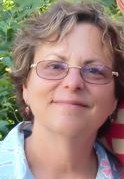Welcome back for the conclusion of my interview with Syd Mandelbaum, founder of Rock and Wrap it Up! You've been able to keep overhead really low in part by relying on a huge, nationwide network of volunteers. How does this work? Do you get a venue or artist to agree and then build the volunteer network or the other way around?
We now find agencies who need the assets we uncover and then
approach partners in those areas. Sadly, with 49,000,000 Americans
being food insecure in 2010, we do not have to look far for partnering
agencies. We also keep our overhead low by working in home offices and
virtually. I do not believe in fund-raising for office space. We have a
staff of six and our annual budget is about 400k per year. We are in
need of support.
What's involved exactly in signing up to participate in your program? Why might a venue, team or artist refuse?
"Signing up" is a misnomer. We meet with a team, hotel or school and arrange for the logistics of the asset recovery. With bands who tour, we ask them to have their road contract or rider reflect their not wanting food to be thrown out wherever they perform. We supply the language for the rider. We can pick up food in about 80% of the cities bands play in. There is no reason for anyone who generates potential landfill to refuse our programs. We reduce the poverty footprint by reducing the carbon footprint.
Aren't donors afraid of potential lawsuits if someone were to get sick from that food?
In 1996, with the passage of the national Bill Emerson Good Samaritan Law, all donors are protected as long as safe food handling techniques are used. The widow of the late Congressman Bill Emerson, 8- CD (MO), Congresswoman Jo An Emerson serves on our Advisory Board.
I'm sure the passage of that law has been a huge help in
recruiting donors. While you have over 100 colleges and schools on the
list, sadly, my own alma mater, as well as the various colleges my kids
graduated from or are currently attending, are all missing from the list.
What do interested alumni or current students have to do to get their
schools to sign on to Rock and Wrap It Up!?
We can be reached by email or 1-877-691-FOOD.
How can those of us who support your work help spread the word?
With poverty so great in our country, we should be in the minds of all venue owners, team owners, large hotels, colleges schools and bands. Everyone should be asking their friends, what is being done with our assets? We are running a $1,000,000 house lottery. With a fifty dollar donation to Rock and Wrap it Up! at www.win4hunger.org, your name will be submitted to win a house built anywhere in the US. We need support to continue and grow our vital work.
You've had an interesting and varied life. You've received many awards and accolades. And, before you started Rock and Wrap It Up! you had two other careers. Can you tell our readers a little about your background?
I had my 18 seconds of fame when I was 44, I became world renowned for heading the American team that did the DNA Genetic Sequencing of Anna Anderson's hair, disproving the relationship to the Czar and Czarina Romanov. Anna Anderson had claimed to be Anastasia Romanov, the Czar's daughter. I gave copies of my scientific papers to Cold Spring Harbor Laboratory's Dolan DNA Learning Center and Museum.
I was also a DNA Consultant at the Harvard Medical School Center for Blood Research Laboratory in genetics testing. At theCenter for Blood Research, I helped found the first DNA round table seminar series, New York and Boston, 1989 to help police departments better use DNA in prosecuting rape and murder cases. Working with a Princeton based thinktank, I helped invent computer micro measurement applications to help infertile women have greater chances to conceive using in vitro fertilization. I became well known in the baseball world in 1991. I used a mathematical algorithm previously developed for micro measurement, which I used for a new application, the measurement of home-runs hit inside and outside stadiums. It was never done before.
In 2006, I co-founded the DNA Shoah Project to help identify Holocaust families find lost members. www.dnashoah.org The project is based at the University of Arizona's Genetics Lab. The project also features the first Holocaust Curriculum, which uses science to sensitize students about the Shoah. The lessons can be downloaded from the website.
After a national survey we conducted determined that many more seniors were using soup kitchens, I sought new tactics to feed many more people. To that purpose, in 2007, I wrote what became the Federal Food Donation Act of 2008, signed by President Bush before he left office. This act encourages all federal buildings not to throw food into landfills, using it instead to feed the hungry.
(Note: You can view every article as one long page if you sign up as an Advocate Member, or higher).







